This Basketball Season Is Missing One Thing: Prince
You can keep your ticker-tape parades, your detours for Vegas debauchery, your drunken laterals of the Lombardi Trophy. If there were championships for celebrating championships, the Minnesota Lynx wouldn’t just win—they’d retire the trophy.
In the fall of 2015, the Lynx played in the WNBA Finals for the fourth time in five years, with the decisive Game 5 against the Indiana Fever playing out at Minneapolis’s Target Center, before 18,933 fans. Among them: a prominent local man, then 57, who used his considerable pipes to cheer vocally. This particular superfan had been attending Lynx games for years, sometimes sitting courtside, other times seated inconspicuously in the crowd. But there was something about the cohesion and synchronicity of this particular squad—“the ladies move the ball,” he enthused to a friend—that held him in thrall. When Minnesota won the game, and thus the title, he contacted a team executive: He wanted to hold a small victory party that night to honor the players.
Word of this invitation rocketed around the locker room. And so it was, after celebrating downtown, the players piled into a bus and headed to a party in Chanhassen, a suburb west of Minneapolis, just off the shore of Lake Minnetonka. There they were ushered inside a 65,000-square-foot … well, what was it? On the outside it looked like a nondescript, boxy warehouse—not dissimilar to the General Mills plant across the road. But inside it was (and is today) something of a cross between Willy Wonka’s chocolate factory and Graceland, a purple-themed, quirkily decorated recording studio and soundstage. This Lynx superfan lived there as well.
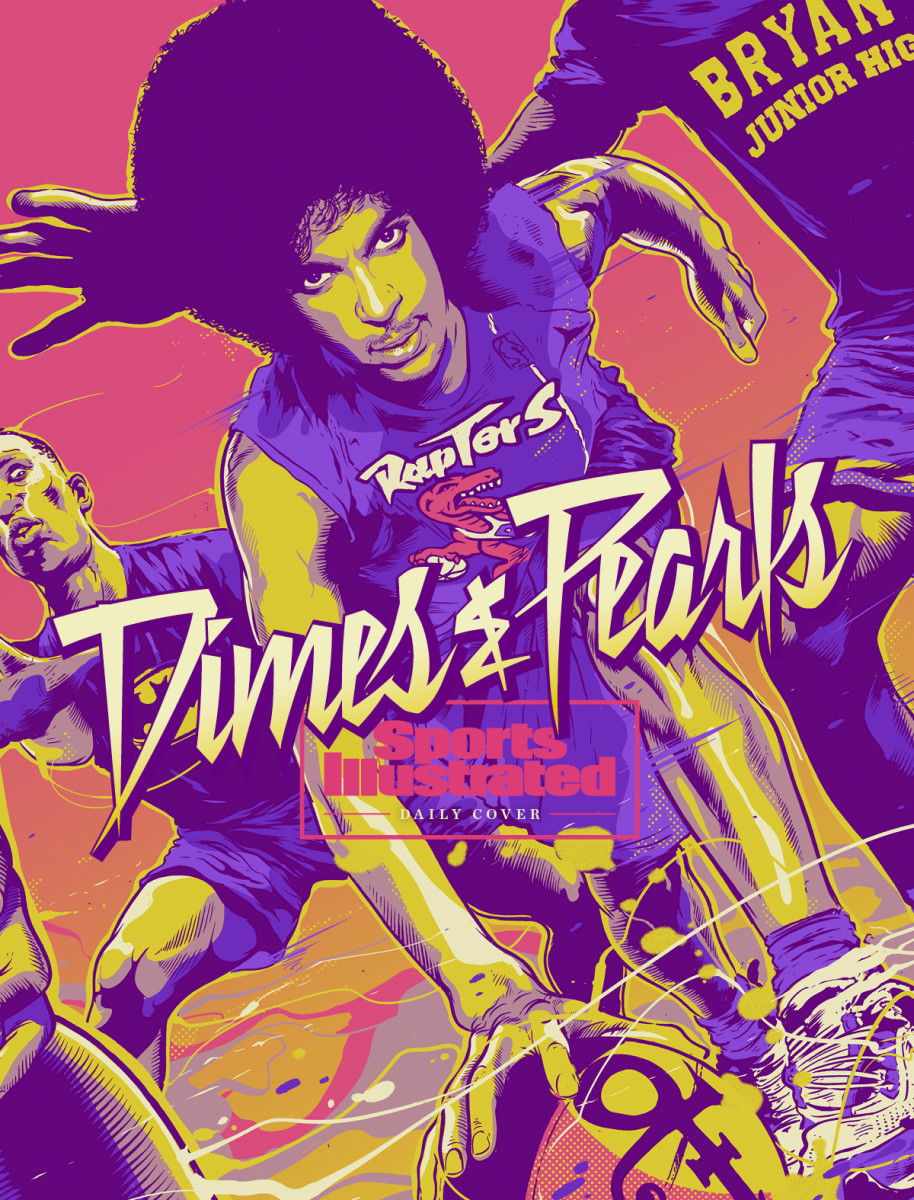
As the players entered, they were asked, gently, to hand over their cellphones. To maintain the privacy and mystique of the place, there would be no photos, no videos. The guests milled around in the so-called NPG Room—for New Power Generation—in front of a projected graphic congratulating them on their title. And at some point the host emerged, flanked by a full band. He congratulated the players and then launched into a concert. For more than three hours he played his catalog of hits. “Let’s Go Crazy.” “Kiss.” “Raspberry Beret.” “Little Red Corvette.” He also played some deep cuts and experimental songs he’d never released. It was all remarkably intimate, especially for a performer accustomed to selling out the world’s biggest stadiums.
Throughout the night, the Lynx players danced and sang along; it was all so transfixing and surreal that they almost forgot they’d won a championship a few hours earlier. Except that the host-performer kept reminding them. He peppered his songs with praise about their season and their performance in the finals. Playfully, he’d insert players’ names into his songs, replacing the likes of Mr. McGee and Old Man Johnson.
When it was all over, as the sun came up above the prairie outside, the players were in that wired-tired phase—but they were asked to stick around a bit longer. The host had disappeared into a kitchen behind the stage, and when finally he emerged, he offered a parting gift that he’d helped whip up: pancakes, which he proceeded to serve. It was, after all, time for breakfast.
Surely you have deduced by now that the host-performer-chef in question was Prince. And it was the perfect distillation of the man: generous, impetuous, progressive, unpredictable, strenuously weird … (pancakes?). And so, so cool. The moment was also fitting, though, in its connection to basketball. Five years ago today, the world lost a musical genius—a blazingly talented and furiously prolific performer on the order of Mozart or Beethoven.
And basketball lost one of its greatest devotees.
Perhaps you’ve seen the team photo. Taken in the mid-1970s, it captures the basketball team at Bryant Junior High in Minneapolis. In the bottom right of the picture, a seventh-grader kneels on one knee, wearing silky shorts, uniform No. 3, a mountainous afro and a wry smile. As the team’s point guard, Prince Rogers Nelson lacked size, but he compensated with speed, vision and ballhandling skills.
James Samuel Harris was a classmate. As Harris (who would go on to become a legendary music producer, d/b/a Jimmy Jam) once recalled to Billboard: Prince was “short, but he had confidence because he was a heck of a basketball player—a point guard who could distribute, had great handles and could shoot the lights out. Steph Curry reminds me of the way Prince played.”
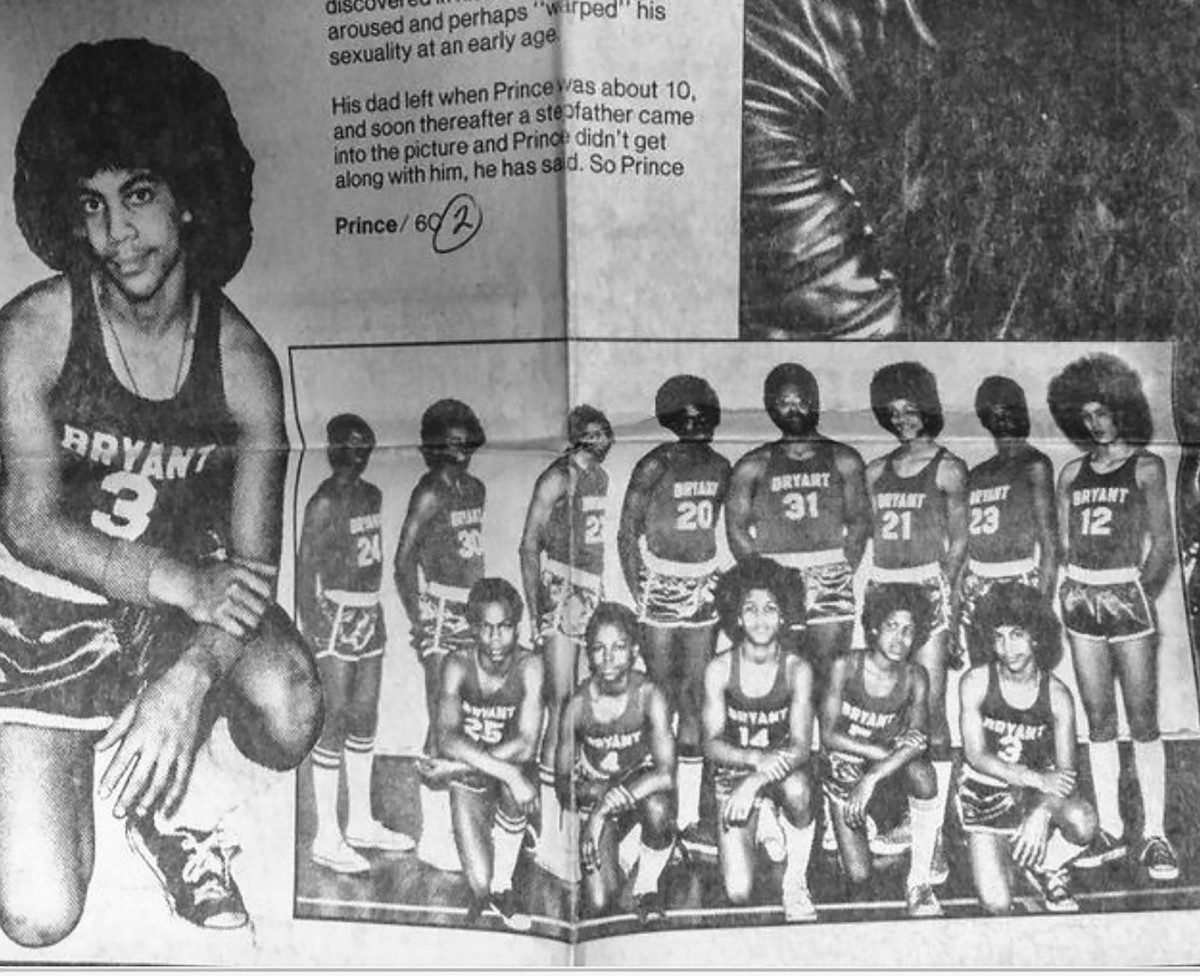
At the next level, Minneapolis’s Central High had one of the best teams in the state, and while Prince made the junior varsity as a freshman, he didn’t much crack the team’s rotation. By multiple accounts, however, he was a hell of a practice player, and—big surprise here—he played with true flair. One teammate from that time, Duane Nelson, whom Prince considered a brother, parlayed his game into a scholarship at the University of Wisconsin-Milwaukee. And Prince figured that if he kept improving, he could trace a similar arc.
As it turned out, there were two notable impediments to Prince’s basketball success. The first was his physique—not just his modest height, topping out at 5' 2", but his slight build. "Prince was a darn good basketball player,” Al Nuness, Prince’s coach at Central High, told the Star Tribune in 2004. “The problem is: He just didn't grow.”
Joey Wilburn, the player next to Prince in that photo, concurs: “He could dribble, he could shoot, and he was quick—classic point guard. I’m telling you, a few more inches and, who knows, we might think of Prince as a basketball player, not a musician. I know this: He would have been spending more time in the gym and less time in the band room.”
Another close friend from childhood, Paul Mitchell—No. 12 in the team photo, and later a college football player—says Prince found inspiration in Walt Frazier, Pete Maravich and, especially, Nate (Tiny) Archibald. “He did crossovers before people did crossovers; he could see the court and facilitate the team,” says Mitchell, now a consultant in Los Angeles. “In high school, we’d all sneak into the gym late at night—cold Minnesota winters, and not a lot of open courts—and, even [against Central’s varsity, including Greg Boone, who would become an NAIA All-America], Prince could absolutely hang.”
Musicianship, of course, was the other impediment to Prince’s early basketball career. An almost supernaturally creative playmaker, as it were, Prince would write lyrics, play guitar, play keyboard, play drums—and then deliver an impossibly broad array of songs. While he spoke in a fairly deep voice, he often sang in a breathy falsetto. Already, as a teenager, he was gaining a reputation—at least around the Twin Cities—as “the next Stevie Wonder.” By 1977, when Prince was barely 18, he had a six-figure recording contract with Warner Bros.
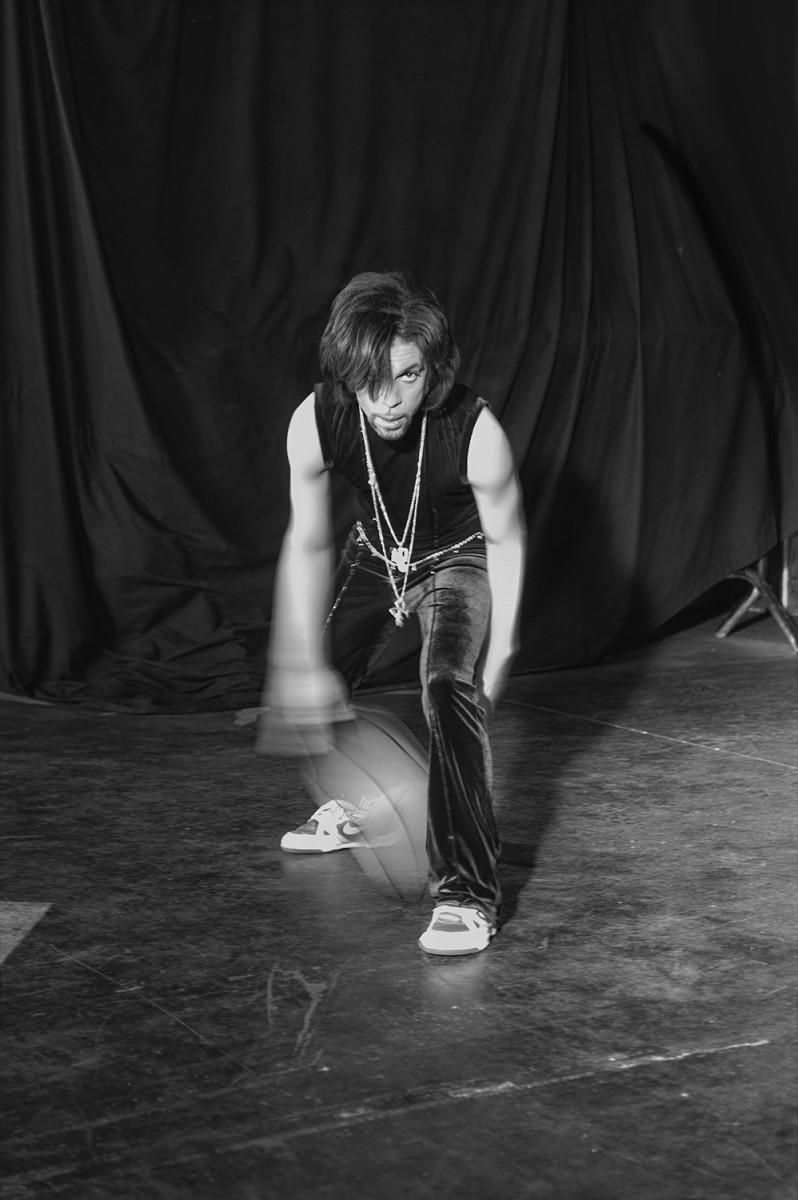
Mitchell remembers Prince weighing whether to devote his energies to basketball or to music—and it was an absolute mismatch. Eventually, he says, the choice became clear: “I’m in college, and Prince calls and says, ‘Hey, man, I signed with Warner Bros.’ He also called to say he was dating my ex-girlfriend.”
Even as Prince’s star ascended, he would regularly play in pick-up games around Minneapolis, and he’d bring a ball on the road during concert tours. By the mid-’80s, following the release of the albums 1999 and Purple Rain, he was a full-fledged rock god, and he opened Paisley Park, that 65,000-square-foot Graceland warehouse, all decorated in purple. In addition to the soundstages, the recording studios and the famous vault, he constructed two areas for basketball, one indoors and one outdoors, near the landing for his tour bus.
Morris Hayes, a longtime keyboardist and musical director for Prince, stands 6' 5," and played high school ball in Arkansas. Which instilled no fear in Prince. Hayes remembers the surprise when Prince suggested that, despite giving up more than a foot, he could win one-on-one. “I figured: I can’t win at rehearsal,” says Hayes. “But I’m gonna kill him in basketball. I’m gonna hurt him. I’m gonna push him down and I’m gonna do whatever I can get away with. … And he still would beat me.”
Other old bandmates tell stories about Prince breaking rehearsal to ball, or pulling all-night recording sessions or playing a show—and then demanding to go one-on-one, two-on-two, three-on-three. … Wendy Melvoin, a guitarist in Prince’s old backing band, The Revolution, has confirmed accounts that he would sometimes even play while wearing heels.
There were celebrity matchups, too. If you haven’t seen the old Chappelle’s Show sketch “Shirts vs. Blouses”—recreating a basketball game in the ’80s between Prince’s and Eddie Murphy’s crews—please, do so immediately. It’s rollicking comedy, Dave Chappelle at his best, but here’s the thing: The account, preposterous as it is, has been verified. Prince really played without changing out of his club attire. And he really did tear it up. And he really did make pancakes—again with the pancakes—when it was over.
Prince was still playing deep into his 40s, in the late 1990s, when the writer Touré was dispatched by Icon magazine to interview the star. Prince being Prince, though, refused to let the journalist record their interview, and so later, struggling to recall responses and confounded by some cryptic remarks, Touré emailed follow-up questions. Some were outright skipped, but when Touré asked, “Will you play basketball with me?” Prince replied, gamely, “Anytime, brother.” The next day, Touré flew from New York to Minneapolis, ball in hand.
True to his word, Prince, wearing red-and-white Nike Air Force One high-tops, arranged a game (including Hayes) at Paisley Park. Later, Touré wrote:
He moved like a player and played like one of those darting little guys you have to keep your eye on every second. Blink and he’s somewhere you wouldn’t expect. Lose control of your dribble for a heartbeat and he’s relieved you of the ball. He jitterbugged around the court like a sleek little lightning bug, so fast he’d leave a defender stranded and looking stupid if he weren’t careful. With his energy and discipline it was a rapid game, but never manic, or out of control. ... Prince played like a natural leader, setting picks and making smart passes, showing a discipline many street players never grasp. Then, he took it boldly to the hole, twisting through the air in between both opponents to make a layup. It was, maybe, a bit too aggressive, but he exhibited the confidence of a man who’s taken on the world and won.
“Even as an adult, he was still good,” says Mitchell, the childhood friend who would later play with Prince on the Paisley Park indoor court. “He was athletic—you could see it in his dancing, everything he did as an artist. He kept playing and he was in such good shape.”
(A digression, but the payoff is worth it: Prince’s competitiveness wasn’t limited to hoops. Prince lore: Michael Jackson once came to Paisley Park for a recording session. An offshoot of their musical rivalry, Prince challenged MJ to a game of Ping-Pong, as he was known to do, on a table that still sits in one of the studios. Prince was pumped to win, but he turned disappointed when he realized that Jackson barely knew how to hold a paddle. After it became clear that Jackson would present no challenge—“Did you see that? He played like Helen Keller!” Prince is said to have blurted out—the host spent the rest of the game trying to pelt his opponent in the groin.)
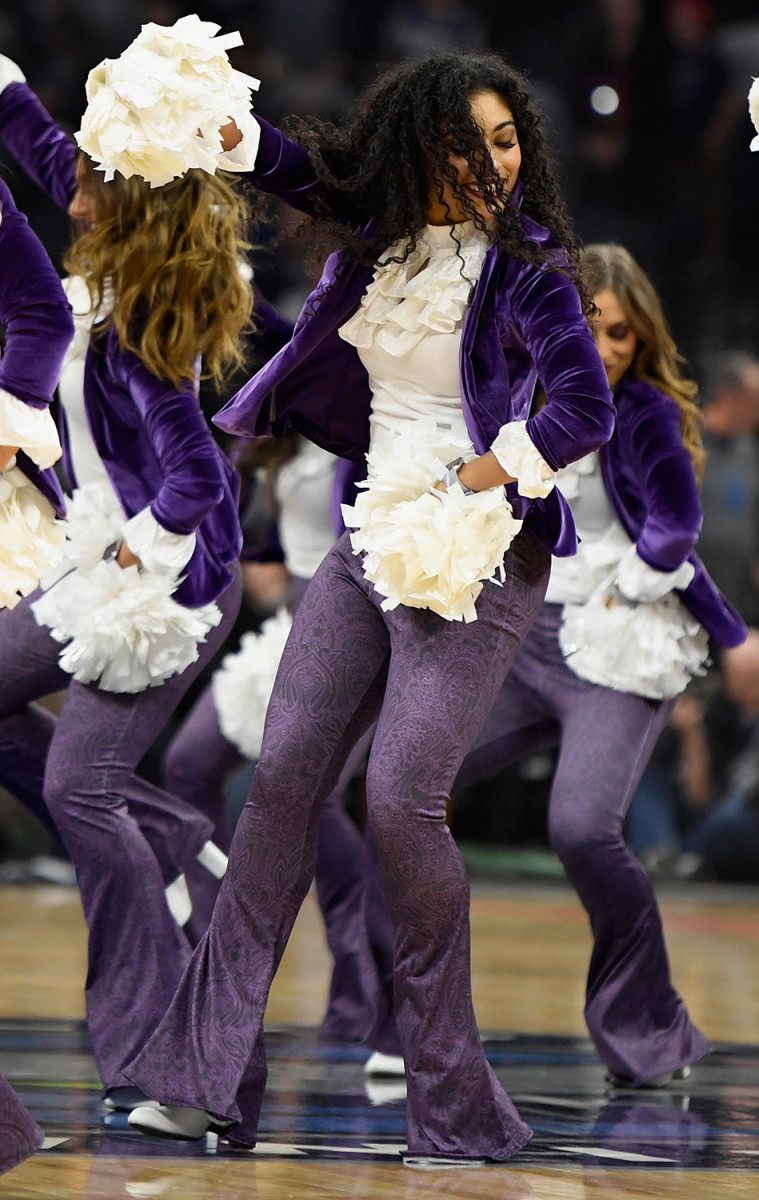
Then there was Prince’s NBA fandom. He followed the professional game closely and told friends that one of the seminal moments in his adult life came in the late ’80s, when the league announced that Minnesota would get an expansion franchise. Accounts vary as to Prince’s level of passion for the home team—“I’d definitely say he was more an NBA fan than a Timberwolves fan,” says one friend—but suddenly he had a front-row seat as a turnstile of stars visited every week.
Prince had several favorite players. One was Kevin Garnett. (“He had one of Garnett’s shoes and kept it as a prized possession,” says Shelby J., a longtime Prince backup vocalist. “It was like, ‘I know he’s a good player, Prince, but get that shoe out of the [Paisley Park] kitchen!’ ”) Another was Dwyane Wade. And then there was Vince Carter. Friends say Prince was taken at first with the high-flying shooting guard’s dunking, and later with his overall game. He invited Carter to Paisley Park; allegedly wrote an unpublished song, “Betrayer,” about him; and was fond of wearing Carter’s No. 15 jersey, both onstage for performances and around Paisley Park, never mind that it fit like a nightgown. At one point, in conversation, a bandmate confused Vince Carter with longtime Vikings receiver Cris Carter. At which Prince cast his familiar side-eye. “No offense to Cris,” Prince said flatly, in a deep, rolling voice. “But you got to get your Carters prioritized.”
For a stretch in the 2000s, if Carter wasn’t coming through Minneapolis, Prince would at least get a glimpse at the NBA All-Star Game, where he often traveled and threw small, concurrent parties. At the 1994 vintage, in Minneapolis, he organized a memorable Friday Night fete at Paisley Park, descending from the ceiling in a cage. (“Something out of a movie,” Alonzo Mourning once recalled.) In 2015, around the All-Star Game in New York, he put on a surprise concert at a party celebrating the 30th anniversary of the Jordan Brand, and it drew the likes of Jay-Z, Queen Latifah, Chris Rock and Carmelo Anthony.
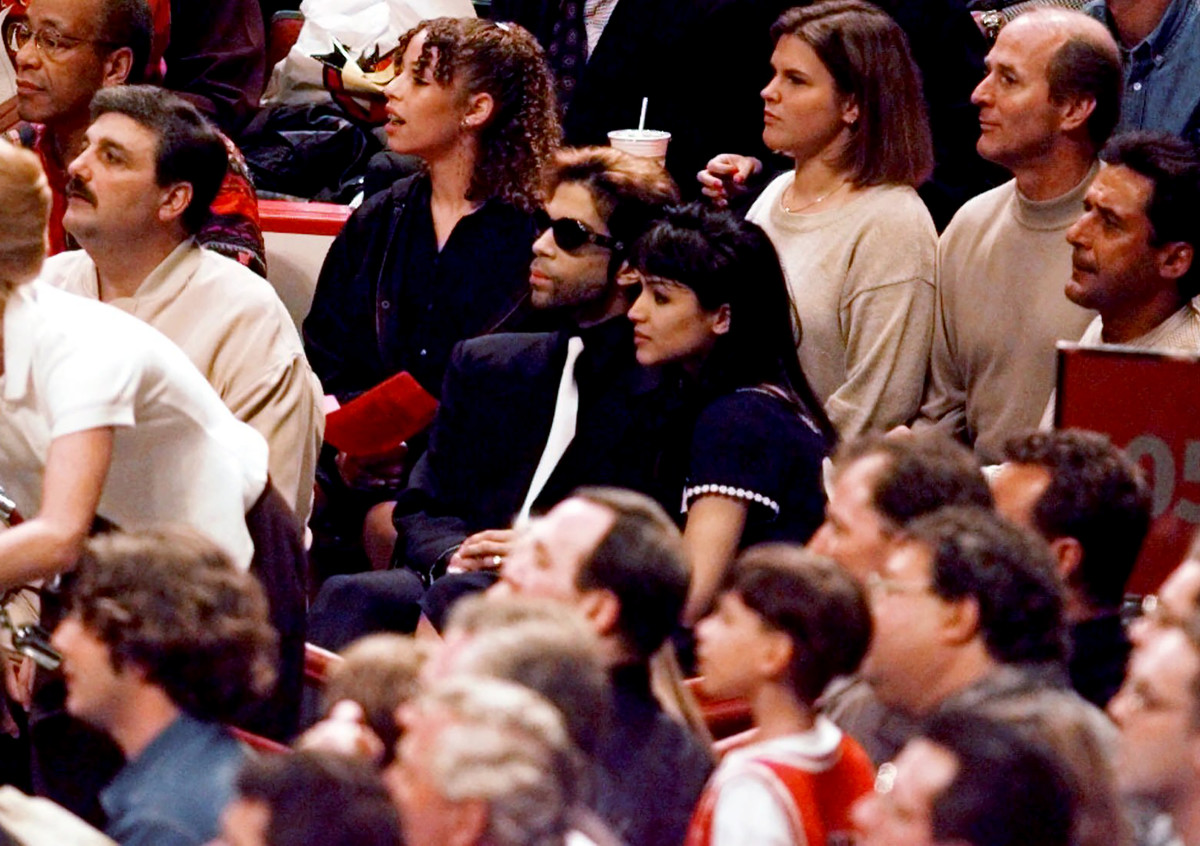
Prince would show up for the NBA Finals, seated with his feet on the wood, adjacent to Beyoncé and Justin Timberlake and others in his celebrity stratosphere. But he would also slip into midseason games and sit in the stands. Wilburn, his high school friend, says that in the same way Prince was happy ducking into a small club—the Dakota in downtown Minneapolis was a favorite—and playing an impromptu set, he relished watching the NBA as a fan would. On the road when touring, he would wear a disguise; but back home, at the Target Center, local fans (less awed, and schooled sufficiently in “Minnesota nice”) extended the courtesy of giving him space.
Asked about the Prince-basketball overlap, former bandmates and childhood friends almost invariably reference “the Carlos Boozer story.” It’s been well-trodden, but it’s too good not to include. Almost 15 years out, the old power forward still dines out on the story, so here goes:
In 2004, Boozer, a newly minted NBA star making $11 million, impulse-bought an 18,000-square-foot home, just off the Sunset Strip, which came flush with a tennis court, a pool and, most bizarrely, a secret underwater cave. Boozer, though, was playing for the Jazz at the time, and he planned to only use the home in the offseason. Shortly after he moved in, his real estate agent asked: Would you be interested in renting it out?
Not really.
What about at $95,000 per month?
Now we’re talking.
At the signing, a limo pulled up and the renter climbed out. Says Boozer: “I’m like, ‘Whoa. Hey, Prince.’ ” While Boozer tried to conceal his awe, Prince gushed to his new landlord, “I’m really a fan of your game.”
Boozer returned home for a few days midseason that year—at least, he thought it was home. He had to check the address. The lions that had adorned his iron gates were replaced with Prince’s glyph. A weight room had been turned into a nightclub, replete with a DJ booth. One spare bedroom was transformed into a hair salon, another into a massage parlor. The master suite suddenly had a heart-shaped bed. The walls were all purple, there were people runnin’ everywhere.
Boozer was furious, and he consulted a lawyer who encouraged him to litigate. But he remembers thinking: Who wants to sue Prince? As Boozer tells it, he tried to contact Prince, who eventually reached out during a tour stop in Asia. Prince, Boozer says, promised that when the lease ended, You will never know I was there. More important, he wired $500,000 as a show of good will. Sure enough, when the lease ended and Boozer moved back to his home in the summer of 2005, there was no indication that anyone else had ever occupied the place.

For Prince, basketball was a form of lifelong recreation. It was also a release from the pressure and intensity of recording, which he did almost as reflexively as the rest of us breathe and sleep. But it wasn’t just diversion or distraction; again and again, Prince’s friends and bandmates suggest that basketball was part of his musicianship. “I think [basketball and music] came from a similar place,” says Shelby J. “They’re about creating and improvising and innovating.”
She and Morris Hayes both note how often Prince would use basketball to make a point to his bandmates—and to motivate them. “He loved Michael Jordan, referred to everything Chicago Bulls,” Says Hayes. “He would tell me all the time: ‘Morris, I'll shoot the three. You be like Dennis Rodman—you get the rebound; you pitch it out to me.’ He said one important thing, and bands all over should know this: ‘If you look at when Michael Jordan would score 60 points, and the Bulls still lost a game, that means Michael was great, but it’s [more important] what the team does. When the team plays well, the team wins.’ ”
Hayes tells this story at Paisley Park, which remains open five years after Prince’s death of a fentanyl overdose, on April 21, 2016. Tour groups file through every hour or so, even in a pandemic, and Prince nostalgia is flowing. The place still resists easy description. It’s part museum, part active recording studio. It’s a mix of purity and commerce. Meat isn’t served on the premises, a nod to Prince’s vegetarianism, and visitors can only take photos in a select few rooms. But there’s a café and a gift shop that sells Prince-branded T-shirts, caps, water bottles … even Ping-Pong balls. The old tour bus sits out back, as if ready to hit the highway. The basketball hoops, on the other hand, have been taken down.
Inside, on the ground floor, an open room that Prince called the Atrium sits regally. It’s located one floor above the vault and a floor below the bedroom where Prince passed away. The Atrium doubles as a shrine to the artist. Doves cry in a cage overhead, competing for air time with a Prince soundtrack that plays all day. The walls are covered in posters, framed platinum albums and artistic renderings. The floor bears the iconic Prince glyph.
And right off the Atrium, an area resembling a living room is preserved as Prince’s hangout space. There’s a purple couch, swaddled with the purple blanket that Shelby J. knit for him as a birthday gift. In front of the couch, a television airs a basketball game on loop. It’s easy to walk past without noticing that the featured game is the WNBA Finals decider from 2015. The Lynx beat the Fever. The players celebrated gleefully. And that’s before they knew how their unforgettable night would end.
• Meet the TV Producer Who Got the NFL To Jam
• The Trade That Might Have Saved Caris LeVert
• The Year of the Opt-Out NFL Prospect
